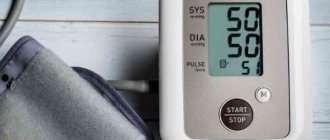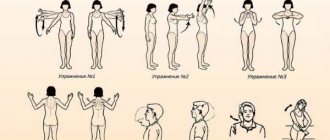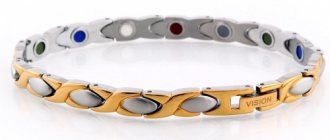How to measure blood pressure correctly
Having weighed many factors before purchasing a good tonometer, you also need to learn how to measure pressure, that is, adhere to certain rules, namely:
- do not measure pressure during or after stress, as well as after any physical activity;
- do not hold your mobile phone during the procedure;
- carry out the procedure only in a sitting position (in some cases it is allowed to lie down), and so that the measured area is at the level of the heart;
- do not drink coffee or green tea an hour before the procedure, otherwise the readings will not be accurate;
- empty the bladder, as this affects the value of the lower indicator;
- When fixing the cuff, do not squeeze your arm - it should be applied as comfortably as possible.
Budget models up to 2,000 rubles
B.Well PRO-33 ML
Shoulder tonometer B.Well PRO 33 automatic type with cuff (circumference from 22 to 42 cm). It runs on both batteries and a power supply, which, by the way, is not included in the kit. The device has a minimum of functions, so it is perfect for older people. Operating the tonometer is intuitive, especially since there is only one button on the body. One of the disadvantages is the rigid cuff made of unpleasant material.
Price: ₽ 1,990
What do the tonometer numbers show?
Blood pressure readings are very important for assessing blood circulation in the body. Usually measurements are taken on the left hand using a tonometer. As a result, the doctor receives two indicators that can tell him a lot about the patient’s health status.
Such data are determined due to the continuous work of the heart at the time of measurement and indicate the upper and lower limits.
Upper blood pressure
What does the top pressure number mean? This blood pressure is called systolic, since it takes into account the readings of systole (heartbeat). It is considered optimal when, when measuring it, the tonometer shows a value of 120-135 mm. rt. Art.
The faster the heart beats, the higher the readings will be. Deviations from this value in one direction or another will be regarded by the doctor as the development of a dangerous disease - hypertension or hypotension.
Lower blood pressure
The lower numbers show blood pressure during the period of relaxation of the ventricles of the heart (diastole), therefore it is called diastolic. It is considered normal to be between 80 and 89 mm. rt. Art. The greater the resistance and elasticity of the blood vessels, the higher the lower limit will be.
Pulse
Heart contractions and their frequency can tell the doctor about the presence or absence of arrhythmia and other diseases. Depending on external reasons, the pulse may speed up or slow down. This is facilitated by physical activity, stress, consumption of alcohol and caffeine, and so on.
The average for a healthy adult is 70 beats per minute.
An increase in this value may indicate an attack of tachycardia, and a decrease may indicate bradycardia. Such deviations should be under the supervision of a doctor, as they can lead to serious health problems.











